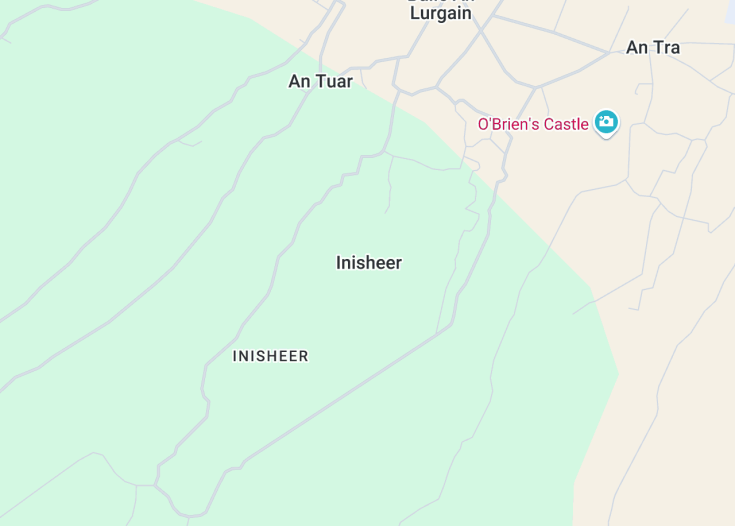Inisheer, the smallest of the three Aran Islands located off the west coast of Ireland, offers an enchanting escape into a timeless rural charm. Known for its traditional Irish culture, the island is dotted with ancient ruins, serene beaches, and a quaint village.
Visitors can explore the old castle ruins, observe local crafts in the making, and enjoy scenic walks along the rugged coastline. With its strong focus on preserving Gaelic traditions, Inisheer serves as an ideal destination for those seeking an authentic Irish experience intertwined with breathtaking natural beauty.
Remember to bring comfortable walking shoes, as Inisheer’s beauty is best explored on foot through its winding pathways and serene landscapes.
Visiting during the summer months allows for improved ferry services and the opportunity to experience the island’s vibrant cultural festivals.
Top things to do & see in Inisheer
Select the following sights and activities to discover best tickets and tours available in Inisheer.
Inisheer: A Timeless Irish Gem
| Country | Ireland |
| Time in Inisheer | GMT+0 |
| Language spoken | Irish (Gaelic), English |
| Population | 297 (According to the 2016 Census) |
| Currency | Euro (€, EUR) |
| Airports |
|
Inisheer, the smallest and most eastern of the Aran Islands in Galway Bay, Ireland, is a place steeped in ancient Irish culture and natural beauty. Known for its traditional Irish architecture, untouched beaches, and historical landmarks like O’Brien’s Castle, Inisheer attracts visitors who are looking for a piece of authentic Irish heritage and tranquil scenery. The island is also famous for its vibrant traditional music and dance scene, drawing culturally curious tourists year-round.
Where is Inisheer?
Inisheer is situated at the mouth of Galway Bay, off the west coast of Ireland, part of the Aran Islands group.
Distances:
| Route | Distance by car | Time by car |
|---|---|---|
| Galway to Rossaveal Ferry Port | 23 miles (37 km) | 1 hour |
| Ennis to Doolin Ferry Port | 30 miles (48 km) | 50 minutes |
What is Inisheer famous for?
Inisheer is renowned for its lush landscapes, ancient castles, and a rich tradition of Irish language and music. It remains a bastion of traditional Irish culture, offering a serene getaway and an intimate view into the Ireland of yesteryears.
History
Prehistoric Period – Early Christian Era
Inisheer, or Inis Oírr, the smallest of the Aran Islands in Ireland, boasts a rich history dating back to ancient times. The island’s initial inhabitants likely arrived during the Bronze Age, as evidenced by the remains of stone forts and other archaeological artifacts. Through the centuries, Inisheer served as a haven for early Christians seeking solitude and a place for spiritual contemplation, leaving behind several religious sites that still stand today.
Medieval Period – 8th to 12th Century
During the medieval period, Inisheer’s strategic position along the western maritime routes made it a valuable asset for the Gaelic clans of western Ireland. It was during this time that some of the island’s most famous structures, such as O’Brien’s Castle, were established. The castle stands as a testament to the island’s importance in regional politics and defense mechanisms against invading forces, including Vikings and Norman adventurers.
Late Medieval – Early Modern Period – 13th to 17th Century
Following the Norman conquest, Inisheer experienced significant cultural shifts though it largely maintained its Gaelic traditions. The 16th and 17th centuries were particularly pivotal, marked by increased English influence leading to eventual integration into the British Empire. This era also saw the introduction of Christianity in more structured forms, with the construction of churches and adoption of new religious practices.
Modern Period – 18th Century to the Present
The 18th and 19th centuries witnessed a transformation in the social and economic structure of Inisheer. Emigration patterns emerged, significantly influenced by the Great Famine of the mid-19th century. Despite such challenges, Inisheer retained a distinct cultural identity, evident in its preservation of the Irish language and traditional crafts. Today, the island is celebrated for its historical sites, vibrant cultural festivals, and as a bastion of traditional Irish culture in the modern age.
Visit Inisheer
What to see and do in Inisheer
Inisheer is a treasure trove of cultural heritage and natural beauty. Visitors can explore ancient ruins like O’Brien’s Castle, which offers panoramic views of the island.
The island is also home to several traditional thatched cottages and the iconic Plassey Shipwreck, washed ashore in 1960 and now a poignant landmark. Nature enthusiasts will appreciate the pristine beaches and the diverse flora and fauna, particularly the rare orchids found here.
- Explore ancient ruins and historical sites
- Visit the Plassey Shipwreck
- Walk along the picturesque beaches
- Enjoy local Irish crafts and cuisine
Annual Events in Inisheer
Inisheer hosts several cultural events throughout the year, celebrating its rich Irish heritage. Notable among them is the St. Patrick’s Day festival in March, featuring traditional music, dance, and community festivities. The summer months bring the Inisheer Regatta, part of the wider Galway Hooker Festival, showcasing traditional sailing craft in thrilling races.
Best time to visit Inisheer
The ideal time to visit Inisheer is during the late spring to early autumn, from May to September, when the weather is milder and the natural scenery is at its most vibrant. This period also coincides with the island’s cultural festivals, offering visitors a rich experience of local traditions and celebrations.
Is Inisheer worth visiting?
Indeed, Inisheer is well worth a visit. With its enchanting blend of natural beauty, historical depth, and vibrant cultural expressions, the island offers a unique glimpse into traditional Irish life and heritage.
The well-preserved landscapes and the warmth of the local community further enhance the experience, making it an essential destination for those seeking both tranquility and richness in cultural encounters.









